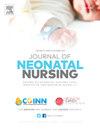新生儿戒断综合征影响的最新进展
Q2 Nursing
引用次数: 0
摘要
在哥伦比亚,DANE报告称,12-65岁妇女滥用非法精神活性物质(PAS)的发生率为5.6%,怀孕期间为6.9% (DANE, 2020),这是新生儿戒欲综合征(NAS)的一个危险因素。目的分析NAS对新生儿发育变量的影响及其对公共卫生指标的影响。方法对Embase、Cochrane、Scopus、Scielo和Medline数据库用西班牙语/英语的MESH术语进行修订。纳入回顾性医院研究、综述文章和官方文件,排除不可用或不相关的文件。结果snas是新生儿重症监护病房(NICU)住院、低出生体重(Bailey and Diaz-Barbosa, 2018)、生长和神经发育迟缓、卫生服务成本增加以及残疾调整生命年(DALYs)较高的危险因素。安非他明、类阿片和镇静剂的非医疗消费者中,40%以上是妇女(毒品和犯罪问题办公室,2022年)。尽管全球PAS使用有所增加,但没有发现与吸毒有关的NAS的官方统计数据。结论snas具有短期和长期的健康影响,是一个公共卫生问题。预防政策是必要的。本文章由计算机程序翻译,如有差异,请以英文原文为准。
Update on the impact of neonatal abstinence syndrome
Introduction
In Colombia, the DANE reports that the prevalence of illicit psychoactive substance (PAS) abuse in women aged 12–65 is 5.6 %, and during pregnancy, it is 6.9 % (DANE, 2020), a risk factor for Neonatal Abstinence Syndrome (NAS).
Objective
To analyze the impact of NAS on neonatal development variables and its effect on public health indicators.
Methodology
Databases Embase, Cochrane, Scopus, Scielo, and Medline were revised with MESH terms in Spanish/English. Retrospective hospital-based studies, review articles, and official documents were included, excluding unavailable or irrelevant documents.
Results
NAS is a risk factor for NICU stays, low birth weight (Bailey and Diaz-Barbosa, 2018), growth and neurodevelopment delays, increased health service costs, and higher Disability-Adjusted Life Years (DALYs). More than 40 % of non-medical consumers of amphetamines, opioids, and sedatives are women (UNODC, 2022). Despite a global increase in PAS use, no official statistics on NAS related to drug use were found.
Conclusions
NAS is a public health issue due to its short- and long-term health implications. Prevention policies are necessary.
求助全文
通过发布文献求助,成功后即可免费获取论文全文。
去求助
来源期刊

Journal of Neonatal Nursing
Nursing-Pediatrics
CiteScore
2.00
自引率
0.00%
发文量
143
期刊介绍:
Aims & Scope: This is the practical, bimonthly, research-based journal for all professionals concerned with the care of neonates and their families, both in hospital and the community. It aims to support the development of the essential practice, management, education and health promotion skills required by these professionals. The JNN will provide a forum for the exchange of ideas and information between the range of professionals working in this field; promote cooperation between these professionals; facilitate partnership care with families; provide information and informed opinion; promote innovation and change in the care of neonates and their families; and provide an education resource for this important rapidly developing field.
 求助内容:
求助内容: 应助结果提醒方式:
应助结果提醒方式:


